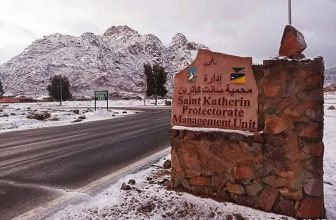Luxor initially appears in Egyptian historical records during the 11th dynasty, specifically during the reign of King Mentohotep. The ancient city of Thebes, which served as Egypt’s capital under the New Kingdom, is one of the most majestic towns in the world (1570-1069 BCE). It’s around 800 kilometers (500 miles) south of the Mediterranean, and 675 kilometers (419 miles) south of modern Cairo. Luxor’s best monuments, such as the temples of Karnak, Luxor, and the Valley of the Kings, where the heart and soul of ancient Egyptian culture are immortalized, were considered a cult center, a hub for religious activity, and the home of Luxor’s best shrines. The city was known as Nowe or Nuwe because it served as a temple to the god Amun (City of Amon). The city was given the Greek name “Thebai” when it was stripped of Ta-ope (The Ancient Name of Luxor), which was based on and utilized by the famed Greek poet Homer, who claimed that Egypt had a “Thebes with Hundred Gates.” Many festivities, such as the Festival of Opet and Shemu, were held in the city. The city was designated as a UNESCO World Heritage Site in 1979 and is known for housing some of Egypt’s most amazing temples, including the Karnak Temple, Luxor Temple, Valley of the Kings, and many others, as well as tombs of famous kings and nobles and artifacts from various periods of ancient Egypt.
Thebes’ History
The city’s history dates back to Egypt’s Old Kingdom when Thebes was the capital of Upper Egypt’s fourth nome, “Waset” (Districts). The majority of the earliest monuments are from the 11th dynasty (2081-1939 BC), and by the 12th dynasty (1938-1756 BC), Egypt’s capital was Memphis, and Thebes was ruled by foreign invaders known as the Hyksos. However, King Ahmose rescued the city, and the Hyksos were driven out between (1530-1520 BC). Thebes’ illustrious history began in the 18th dynasty when the city was elevated to the status of official capital and completely rebuilt utilizing the vast wealth amassed through the epic expeditions to Nubia and Asia. The momentum of prosperity reached an all-time high in the 14th century during the reign of Amenhotep III when the temples of Amon were drenched in lavish materials, so it was no surprise when Akhenaton (1353-1336 BC) attempted to impose monotheism in the form of Atomism (worship of the only god Aton), but he miserably failed, causing the city to be thrown into chaos for many years. Tutankhamen (1333-1323 BC) began the reconstruction of the city to the highest level of beauty and distinction, and both Seti I (1290-1279 BC) and Ramses II (1279-1213 BC) erected several temples and expanded the city as far as they could. The city of Thebes slipped into darkness near the end of the new kingdom when the government crumbled, the economy began to crumble, and the priests of Amon seized all authority. These were the worst periods in the city’s history.
Thebes’ Monuments
Due to the endless number of enormous temples and glorious monuments located within the renowned Theban Necropolis, the city of Thebes (modern-day Luxor) is one of the world’s largest and most recognized tourist destinations. The majority of the city’s well-known features were constructed by Egypt’s greatest monarchs during the New Kingdom. The Valley of the Kings and Queens, which served as the final resting place for many kings and queens, as well as the largest house of worship during ancient times, the Karnak temple, which was built to honor the creator god Amon, his wife Mut, goddess of justice, and their son, the moon god Khnosu, among other famous gods such as the goddess of love, beauty, and joy Hathor, the Nile crocodile god Sobek, and the sky falcon We can’t discuss Thebes’ mortuary temples without discussing the magnificent temple of Hatshepsut, one of Egypt’s best-preserved ancient temples. The stunning Colossi of Memnon is also a protector of Thebes. There are also a number of temples dedicated to various pharaohs who wish to immortalize their own legacy, such as the Ramesseum, Abu Simbel’s mortuary temple, which details Ramses II’s victory at the Battle of Kadesh (1275 BC), which is his greatest success. Most temples also played an important part in depicting religious beliefs and daily life routines through magical creative inscriptions on their walls, as well as a significant contributor in giving many artifacts of one of humanity’s most majestic civilizations. Travel to Egypt and take one of our beautiful Nile river cruises to see these temples and sites while being escorted by an Egyptologist tour guide.








